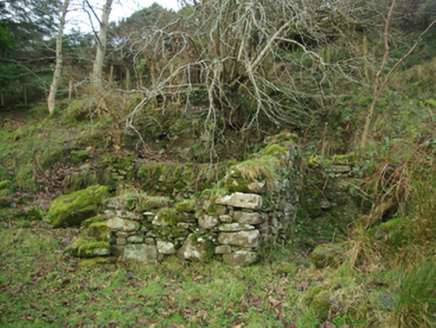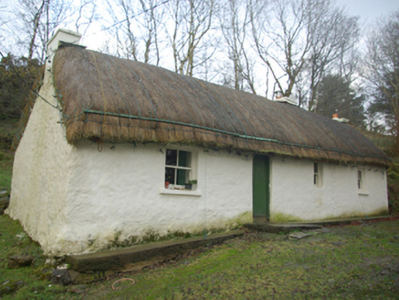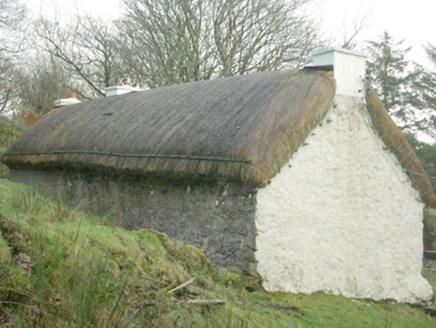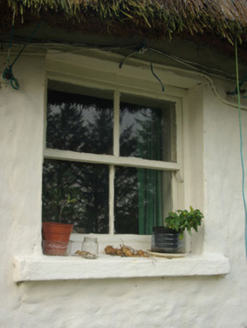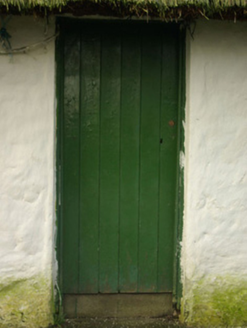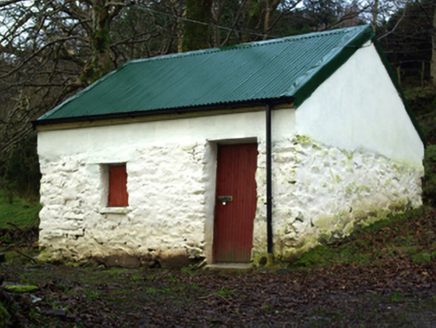Survey Data
Reg No
40845001
Rating
Regional
Categories of Special Interest
Architectural, Technical
Original Use
House
In Use As
House
Date
1800 - 1840
Coordinates
170296, 376799
Date Recorded
05/12/2007
Date Updated
--/--/--
Description
Detached four-bay single-storey vernacular house built c. 1820 and extended to the north-east end. Pitched/domed thatched roof having ropes over ridge secured on pegs at eaves level. Three rendered chimneystacks. Limewashed rubble stone construction, slightly battered to the south-west corner of front elevation (south-east); modern blockwork construction to the rear elevation (north-west) at the north-east end. Square-headed window openings with cut stone sills and two-over-two pane timber sliding sash windows. Square-headed door opening having battened timber door. Set well back from road on sloping site in own grounds to the west of Killybegs. Long approach avenue to house from the south-east. Detached two-bay single-storey outbuilding to south-west, having replacement pitched corrugated-metal roof, limewashed rubble stone walls with recent blockwork repairs, square-headed window opening with battened timber shutter and square-headed door opening with replacement timber battened door. Ruins of earlier dry stone house to rear of main building.
Appraisal
This well-maintained thatched vernacular house retains its early form and character, and is an appealing feature in the rural landscape to the west of Killybegs. Modest in scale, it exhibits the simple and functional form of vernacular building in Ireland. Of particular interest in the survival of the thatch roof, which is now sadly becoming increasingly rare in Donegal. The rounded roof is a typical feature of thatched houses located close to the sea in exposed areas in the north-west of Ireland, while the pegs to the eaves were used to tie ropes (and sometimes nets) over the roof to secure it against the prevailing winds. The irregular-spacing of the openings to the front façade lends it an appealing vernacular character. The blank rear elevation is another typical feature of many small-scale vernacular dwellings in rural Ireland. The form of this building having chimneystacks to the gable ends suggests that this building is of the ‘direct entry’ type that is characteristic of the vernacular tradition in north-west Ireland. The location of the chimneystacks (and the blockwork construction to the rear at the north-east end) indicates that this building was extended to the north-east by a bay at some stage, or repaired in recent years. This house represents a fine surviving example of a once ubiquitous building type in the rural Irish countryside, and is a valuable addition to the vernacular heritage of County Donegal.
